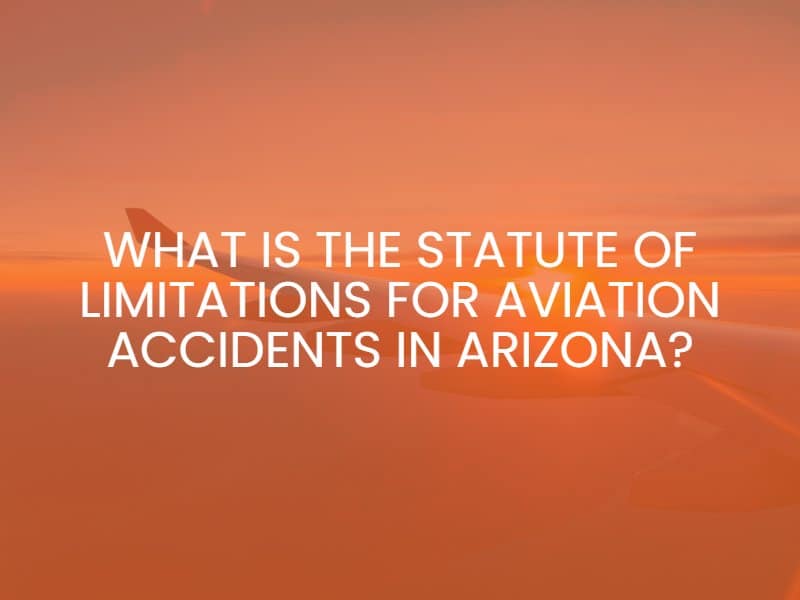If you get injured or a loved one dies in an aviation accident in Arizona, it is imperative to act quickly to bring a legal cause of action. You may be entitled to financial compensation for your life-changing injuries and past and future losses. If you wait too long, you can miss the statute of limitations and forfeit your right to file forever.

The Statute of Limitations Is Two Years in Arizona
The statute of limitations on standard personal injury claims in Arizona is found in Arizona Revised Statute Section 12-542. This law states that there is a two-year limitation on the ability to commence and prosecute legal claims for injuries done to others and injuries that result in death. The deadline will begin on the date that the cause of action accrues.
In an aviation accident lawsuit, the injured party would have two years from the date of the crash to file a personal injury claim. In a wrongful death case, the clock would start ticking on the decedent’s date of death, if this differs from the date of the aviation accident. If your loved one spent two days in a coma before passing, for example, you would have two years from the date of death rather than the date of the accident to file.
Arizona’s two-year deadline applies to all types of personal injury lawsuits, whether the claim is based on the legal doctrine of negligence, strict liability, product liability, premises liability, or an intentional tort. It applies to aviation accident cases that involve minor injuries, catastrophic injuries, deaths, and property damage.
What Is the Purpose of a Statute of Limitations?
A statute of limitations keeps the civil justice system more efficient by eliminating the possibility of a plaintiff waiting for several years to file a claim to damages. It creates a deadline by which the injured party must bring the cause of action to have a valid claim. This cuts out unnecessary waits that could clog up local courthouses. It also ensures that important evidence is still available and prevents a plaintiff from being able to hold the possibility of a lawsuit over a defendant’s head indefinitely.
What Happens If You Miss Your Time Limit to File?
Do not take your statute of limitations lightly. For the most part, the courts in Arizona will not accept or hear an aviation accident lawsuit that is brought after the statute of limitations expires. Even if the courts do not deny your injury claim, the defendant will use the expired statute of limitations as a defense against you, almost certainly resulting in the courts dismissing your case and barring you from financial recovery.
Are There Exceptions to the Rule?

The vast majority of aviation accident lawsuits in Arizona must be brought within two years. However, there are a few exceptions to the rule. One is the discovery rule exception – although this is not often used due to the catastrophic nature of most aviation accidents.
The discovery exception states that if an accident victim does not discover his or her injuries until after the accident, the clock will not start counting down until the date the victim discovered or reasonably should have discovered the injury.
Another exception is if the injured victim was a minor under the age of 18 or was of unsound mind at the time of the aviation accident. In this case, the timeclock will not begin until the victim turns 18 or is restored to his or her normal mental capacity. Finally, claims against governmental employees and entities are subject to different (and often much shorter) deadlines, sometimes as early as 180 days. They also require formal presentation of the claim before filing a lawsuit.
Statutes of limitations are complex and constantly changing. An exception may make your deadline longer or shorter, depending on the situation. The best way to protect your right to file an aviation accident lawsuit in Arizona is to contact an attorney as soon as possible so that the critical deadlines for your claim can be analyzed right way, and evidence concerning the incident can be preserved.